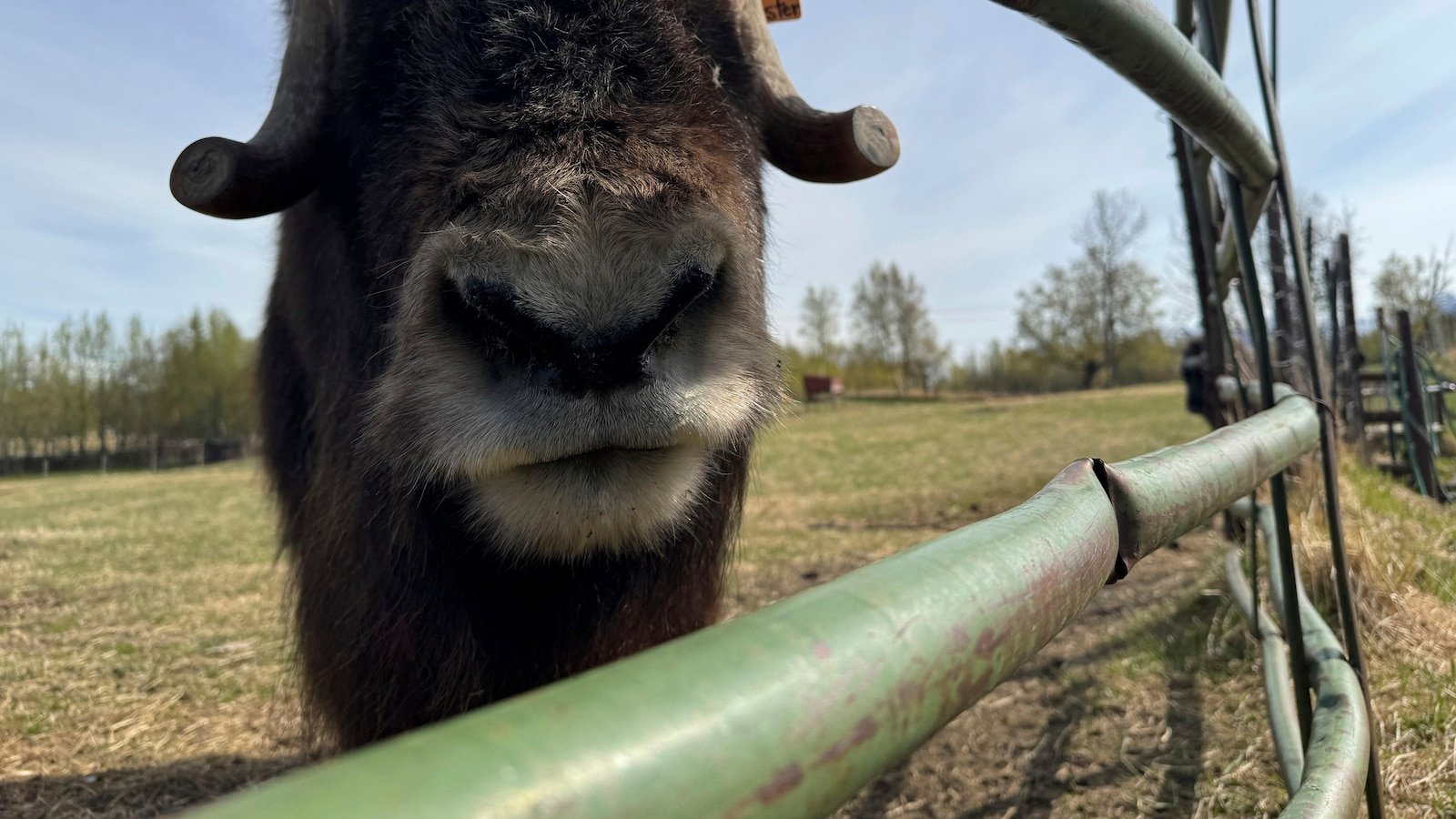Palmer, Alaska – It is one of the favorite traditions of Alaska Mother’s Day, approaching animals that have survived the ice age.
All mothers get a margarita and a free admission on Sunday in the farm of Musk oxen in Palmer, one hour by car north of Anchorage. Once inside, they will have the opportunity to see 75 members of the flock of musk oxen, including three young calves who have just put their feet under them. Also a tie is an old bull named Trebek, named for the late “Jeopardy!” Host Alex Trebek, a benefactor of the installation.
“Who does not want to celebrate Mother’s Day with a Mother of anwill and the most adorable calf you have found in your life?” said Mark Austin, executive director of the farm.
Mother’s Day is the traditional beginning of the summer season for the farm, which draws its roots until 1964 and in several places before moving in 1986 to Palmer.
That movement put it in the Limited Road System of Alaska, provided easier access to the grazing land than in the communities of Tundra and to incorporate educational opportunities in the agricultural facilities, which is eclipsed by the mountainous chains Talkeetna and Chugach.
“When we open the doors here, we began to make Mother’s Day as a great inauguration every year,” said Austin.
He called him a natural decision, celebrating mothers with beautiful oxen of newborn baby musk on the grounds. So far this year, three beeps of baby musk have been born and are on display, and more could be on their way.
Mother’s Day is the busiest day of the year, attracting more than 1,500 visitors. It is a tradition that now extends by three generations.
“It’s a great, just a rite of initiation for many people,” said Austin. “If we ever talk about not doing it, there would be a riot.”
The musk oxen are survivors of the ice age.
“They ran with tigers and mastodons saber teeth, and they are the ones who lived,” said Austin. All flock members have diverse personalities, he added, and are cunning, intelligent and inquisitive.
His relatives closest to today’s animals would be arctic goats. Mature musk oxen bulls can stop 5 feet (approximately 1.5 meters) high and weigh up to 800 pounds (approximately 360 kilograms), while female cows are smaller to approximately 4 feet (approximately 1.2 meters) and up to 500 pounds (approximately 230 kilograms), according to the Fish department and the Alaska Game website.
They are robust and long -haired animals with a slight hump on the shoulder, a short tail and horns, says the website. Inupiat called musk ox “Itomingmak”, which means “the animal with skin like a beard”, for its long hair that hangs almost to the ground.
Mammals once wandered around northern Europe, Asia, Greenland and North America before starting to die. In the 1920s, the last ones were in Greenland and Canada.
The efforts to reintroduce Alaska’s musk ox began in 1934, when 34 were delivered to Fairbanks from Greenland. Since then, the wild population has grown to approximately 5,000, located throughout the largest state in the country, said Austin.
The non -profit farm welcomes the donations of visitors on Sunday. Some people will be direct for baby musk oxen, while others will launch an invoice of $ 100 on the counter first.
“We like to see donation, but we really offer this as an event for the community, as thanks,” said Austin. “It really gives us the opportunity to return something.”





